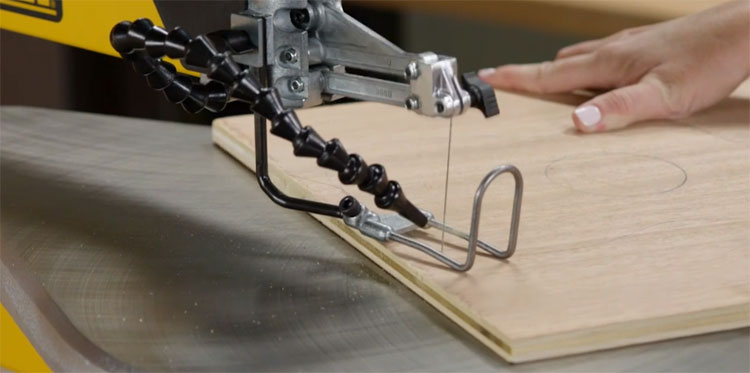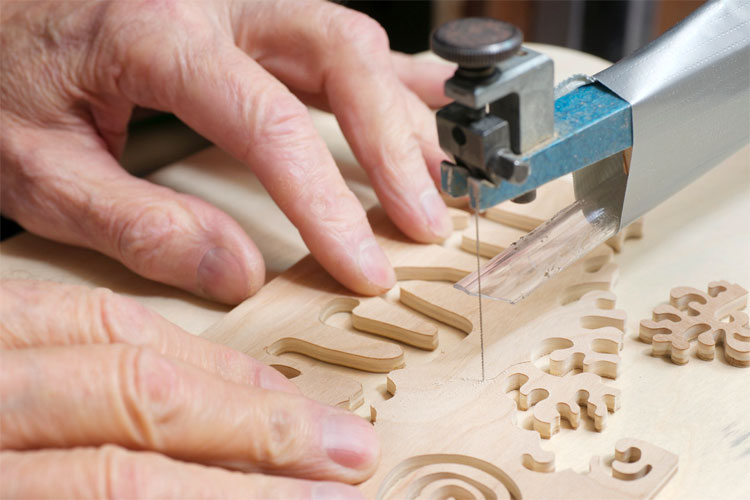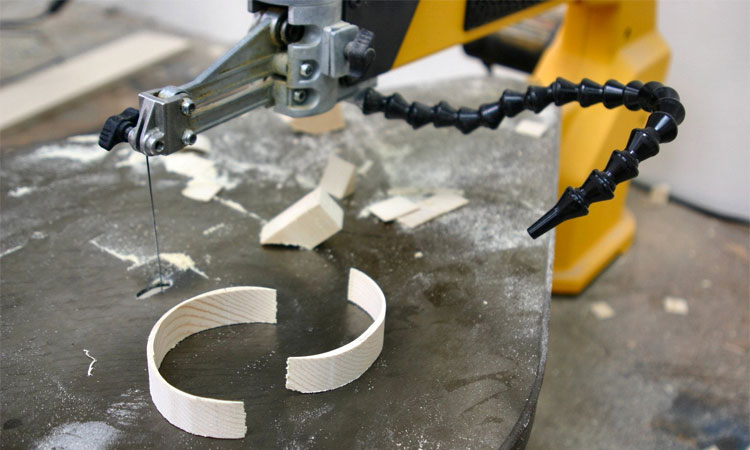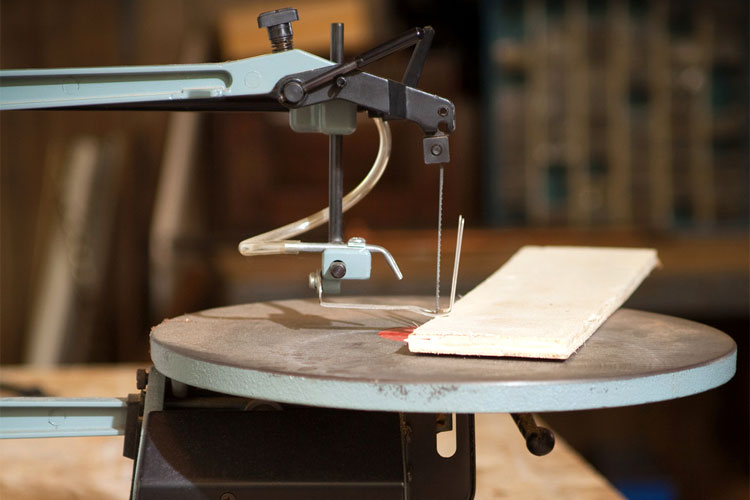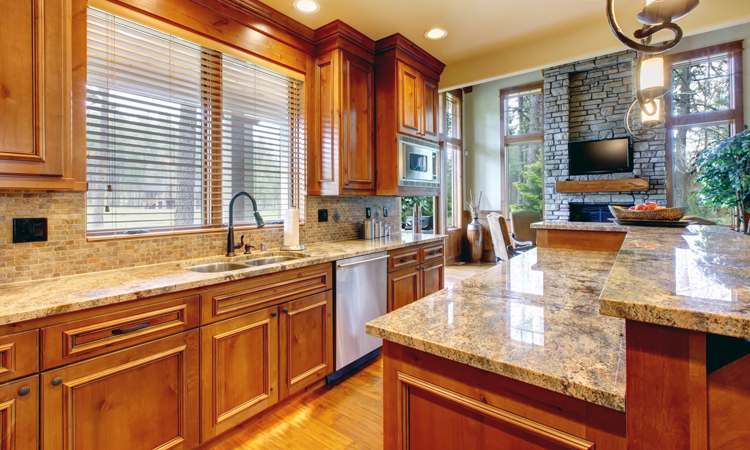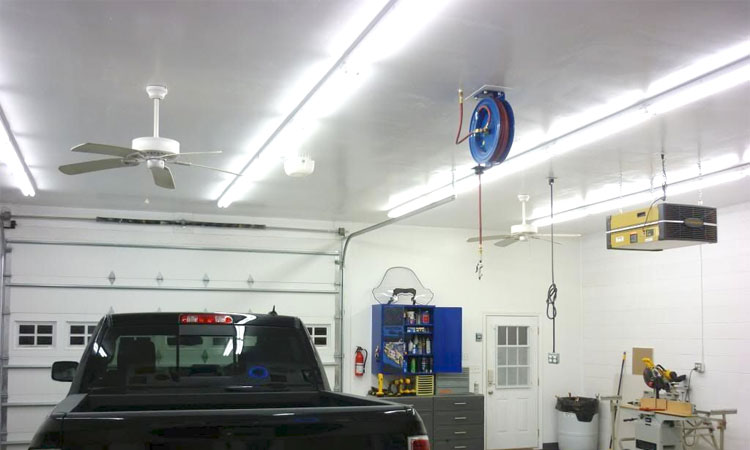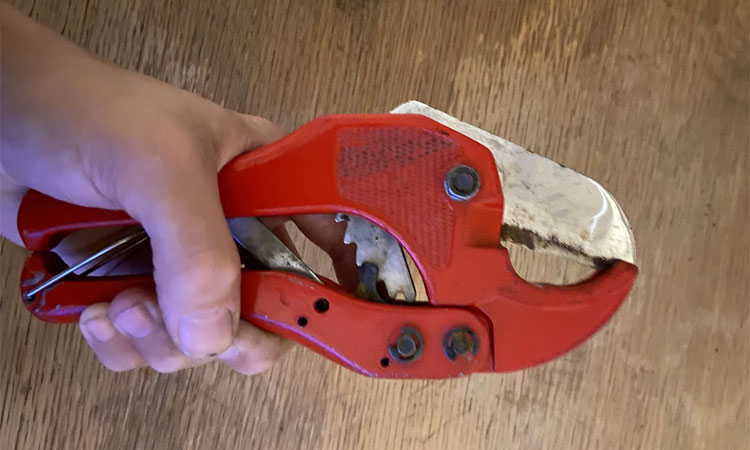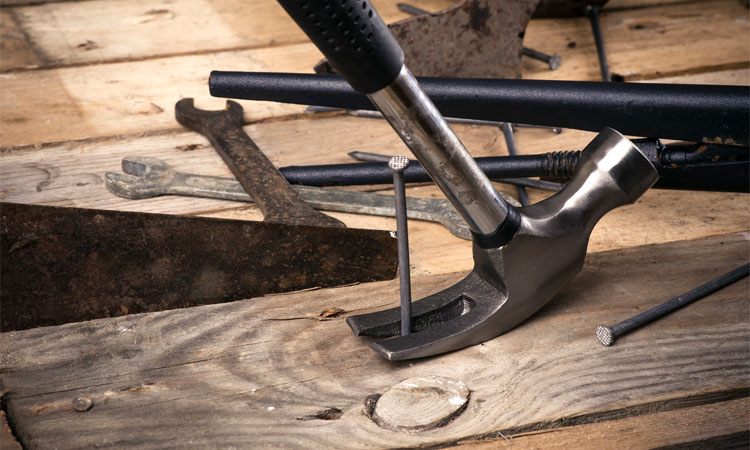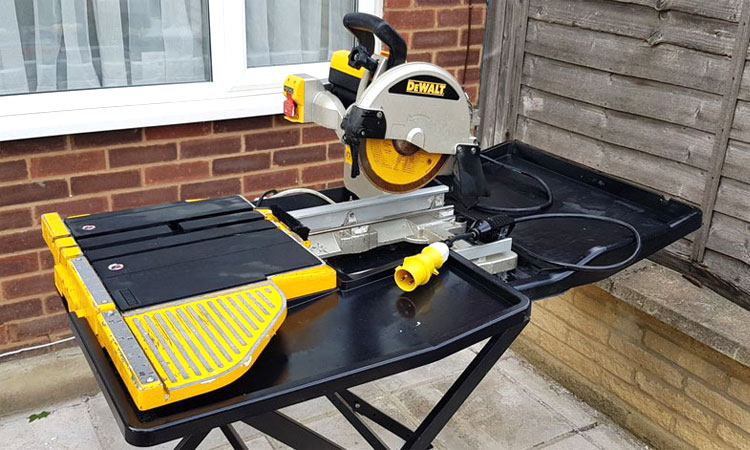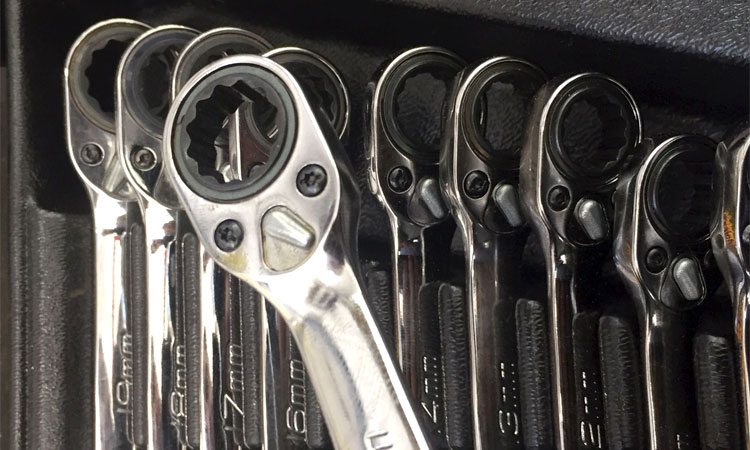7 Best Scroll Saws for Detailed and Intricate Cuts
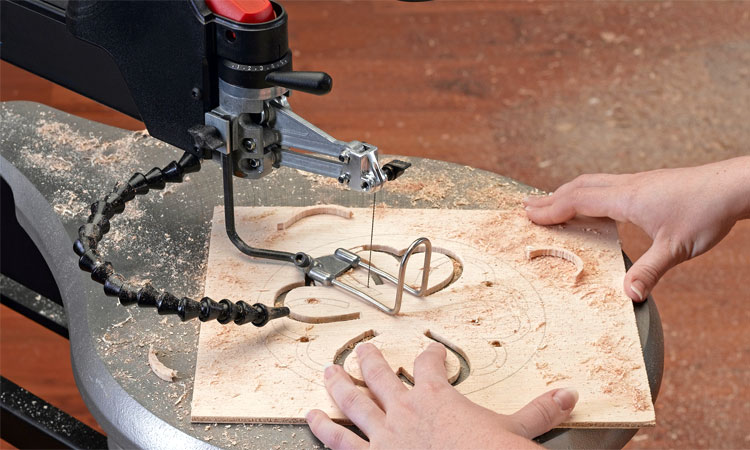
Whether you have a large workshop for building furniture, or just a small garage shop to do crafts in, a scroll saw is one of the most useful tools you can have. These saws allow for a wide variety of projects, from making homemade wooden jigsaw puzzles to complex detail work on thinner portions of ornate furniture.
Both jigsaws and scroll saws can cut non-straight lines but the scroll saw is the tool of choice for cutting intricate curves or designs in wood, plastic, copper, and other materials.
The best scroll saw will be simple to use, have an ample throat depth, allow for quick blade changes, have minimum vibration, cut smoothly, and have a high quality table.
Our 7 Favorites
| Product | Throat Depth | Cut Depth | Speed (SPM) | Table Size | |
|---|---|---|---|---|---|
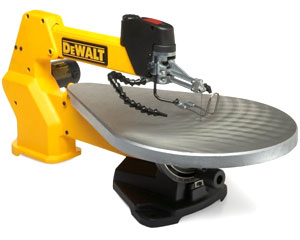 | DeWalt DW788 | 20" | 2" | 400-1750 | 16" x 24" |
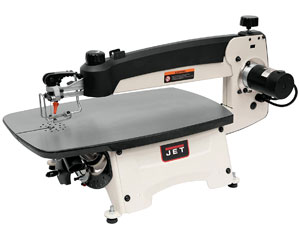 | Jet JWSS-22B | 22" | 2" | 400-1550 | 13" x 23" |
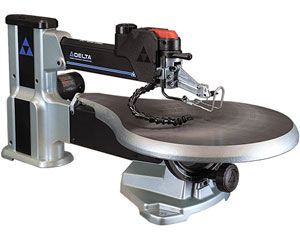 | Delta 40-694 | 20" | 2-1/8" | 400-1750 | 16" x 24" |
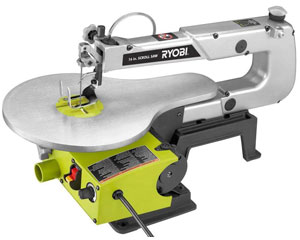 | Ryobi SC165VS | 16" | 2" | 550-1650 | 11" x 16" |
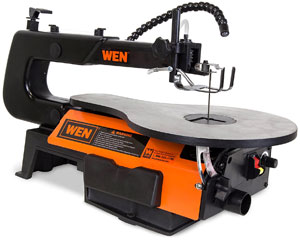 | WEN 3921 | 16" | 2" | 400-1600 | 11" x 16" |
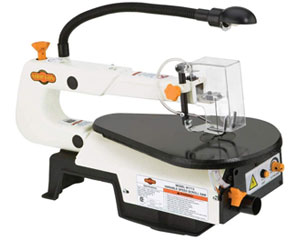 | Shop Fox W1713 | 16" | 2" | 550-1700 | 9" x 16" |
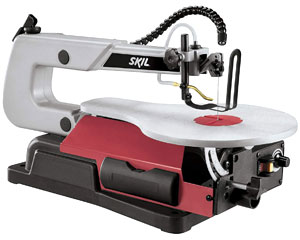 | SKIL 3335-07 | 16" | 2" | 500-1700 | 10" x 16" |
Scroll Saw Reviews
#1 – DeWalt DW788 20-Inch

The front upper arm contains the power switch and a flexible dust blower, as well as variable speed settings which provide 400 to 1,750 cutting strokes every minute. The table is made of oversized cast-iron for superior material support, as well as the ability to bevel 45 degrees to the left and right.
This saw has proven accurate on everything from thin plywood to 1-1/2 inch hardwood, making it very popular amongst even veteran users. All told, it has an up to 2-inch cutting depth. Changing the blade takes a matter of seconds, although some users have found it helpful to prop the clamp up during this process, as it doesn’t lock into the open position.
The oversized 16″ x 24″ table not only helps with large pieces, but absorbs most of the vibration, making this an excellent scroll saw for beginners and experienced users.
Most of the complaints about this saw revolve around damage during shipping, which DeWalt customer service is quick to address. Another, less frequent issue revolves around loose mounting screws, which can cause wobbling and noise.
While it is unfortunate that this problem occasionally makes it out of the factory, it is easy to fix at home. Finally, be aware that the blades included are meant to allow use out of the package, and are not the best quality.
>> Check current price <<
#2 – Jet JWSS-22B 22-Inch

Blade changes are quick and simple with a tool-less holder that automatically tensions the blade. A foot switch (none of the other models include one) and variable speeds of 400 to 1,550 SPM allow for safe and efficient work on a wide variety of materials.
If you’re looking for an integrated stand, check out the Jet JWSS-22K which includes the same model saw along with a matching stand. It has 4 adjustable heights of 24-3/4″, 26-3/4″, 28-3/4″, or 31-3/4″ (using the leveling feet).
The shining star on this tool has got to be the blade change mechanism, and the tool arrives fully assembled. Vibration is quite low, although the highest setting does produce a small amount.
However, there are a few issues with this product if you’re looking for something more heavy-duty than a home workshop requires. The table, while certainly big, doesn’t have enough flat surface to handle large lengths, and some exotic woods can require more speed and power than this tool produces. These issues aren’t a big deal for 99% of users, but can be an issue for more commercial workspaces.
>> Check current price <<
#3 – Delta Power Tools 40-694 20-Inch

The base can angle 45 degrees both left and right, and the blades use a tool-free tensioning lever for longer life and easier blade changes. A 2-1/8″ cutting depth is just a hair over what typical models offer.
There are some contradicting reviews for this product that suggest it either went through a redesign at some point since being released or that consumers were getting the wrong product. But after some more investigating, it appears those issues were in the past.
That said, most other owners have reported high quality and no issues with the parts or assembly. One owner had the same vibration issue a few others had complained about and discovered the counterweight simply needed to be moved closer to the connecting assembly to fix the problem.
>> Check current price <<
#4 – Ryobi SC165VS 16-Inch

The cast aluminum table tilts up to 45 degrees and the base is made of cast iron for reduced vibrations. An 18 TPI blade, hex wrench, and switch key are included, and the tool has a 90-day return policy and 3-year limited warranty.
The Ryobi SC165VS is compatible with plain end blades and gives a nice, smooth cut. Setting it up is easy, although the instructions may not cover all questions on setup and usage.
It’s possible that some consumers have received refurbished units, as some have found the tool broken on arrival or missing parts. Additionally, some owners have reported that the tension knob and bolt were fragile and broke on their units while tightening a blade.
>> Check current price <<
#5 – WEN 3921 16-Inch

The 16-inch table can bevel up to 45 degrees, while its unique feature allows the blade to be placed in either the standard position or a 90 degree angle for maximum woodworking potential.
Despite its size, the 3921’s motor packs a punch, allowing the blades to run at variable speeds ranging from 400 to 1,600 strokes per minute.
As with other WEN tools, you get a lot of bang for your buck and the quality and performance of the saw has surprised quite a few users. While threading the pinless blades can be difficult at first, it becomes easy with practice.
Many consumers have added a pedal with excellent results, and even first-time scrollers have reported almost professional results on their first few projects using this saw. While the WEN model is fine for the budget conscious, it simply won’t stack up to our top 3 picks above.
One major design flaw has generated ongoing complaints. The plastic blade insert tends to be too small, causing materials to catch while cutting. Consumers usually fix this issue by adding a few layers of electrical tape underneath the insert until it sits flush.
Most other issues come down to damage during shipping, and WEN is quick to replace damaged parts or saws in these cases.
>> Check current price <<
#6 – Shop Fox W1713 16-Inch

The 1/8 horsepower, 60Hz motor provides no-load speeds ranging from 550 to 1,700 RPM. A small 9 x 16 inch cast-iron table not only helps keep your wood in place, but may be adjusted to a 45-degree tilt. The adjustable hold-down shoe provides additional control while cutting.
This saw works well with a wide variety of materials, including sappy green woods, sturdy hardwoods, and hard-pressed boards with equal ease. The blade’s accuracy also allows for tight corners with few or no relief cuts necessary.
Users have also reported very little vibration, and none at all when the saw is secured to a table. That’s something many other models can’t claim.
The largest complaint about the W1713 is in regards to how it adapts to pinless blades. The adaptor can be difficult to mount, making this a frustrating feature for users.
Another, more minor complaint is that the hold-down shoe is very basic and should only be used in conjunction with manually holding the material.
As you gain experience, you may want to avoid using the hold down foot on this model (and others) as this actually increases the likelihood of breaking some of the more delicate materials you may be working with.
>> Check current price <<
#7 – SKIL 3335-07 16-Inch

An integrated dust removal system helps ensure a clear work area while its articulated LED work light allows you to see your lines clearly.
All in all, the Skil is an excellent model for beginners. But, it’s important to ensure you buy from a reliable source, as consumers have received broken units and some have noted a much higher vibration that literally shakes the tool apart.
>> Check current price <<
Scroll Saw Buying Guide
What is a Scroll Saw Used For?
Originally designed for scrollwork (hence the name), these small saws have made a lasting impression with craftsmen for their ability to do precision cuts. The ability to set the blade into a hole in the middle of an object means far less risk of damaging a piece when working on cutouts.
Some of the various projects scroll saws are currently used for include:
- Cravings and other 3D artwork
- Jigsaw puzzles
- Lettered signs
- Precision joints and profiles
- Templates
How to Choose a Scroll Saw
There are a lot of scroll saws out there, and the specialization of these saws means you’ll want to look for qualities that you might normally wish to avoid. When picking out a scroll saw, take these factors into consideration:
Blade Type
There are two types of scroll saw blade and they aren’t created equal. Plain end blades are smaller and held in place with clamps. Meanwhile, pin end blades are larger and have pins that help hold the blade in place.
While pin ends may seem the safer option, their larger size means you have to sacrifice a lot of precision.
While some scroll saws have the ability to use both types of blades, it’s generally best to aim for a model that only accepts plain end blades if you plan on getting the most out of your scroll saw.
Features
There are some basics you’ll definitely want in a scroll saw, such as a tool-free blade changing system and table tilt (45 degrees to either side is ideal). You will also want to look for something with less noise and vibration. Larger tables with a machined top are generally best, as this helps determine the maximum size of the pieces you work on.
Some more advanced features to look for can make life easier but aren’t essential. This includes a dust blower and collection system – which is usually more efficient than making your own – and a foot switch so you can use both hands.
Size and Depth of Cut
Scroll saws are categorized by their throat size. The “throat” is the length of blade measured between the saw base and frame. Overall, scroll saw throats range from 12 to 30 inches. Saws with a throat of 12 to 15 inches are generally considered mini scroll saws, while 21 to 30 inch throats are usually for commercial models.
Keep in mind that this size also determines the largest piece of wood you can cut, so you’ll want to find a size as big as, or slightly larger than, the biggest piece you expect to work with. As a general rule, the most common scroll saw throat sizes for home workshops are 16 to 20 inches.
Speed
You actually don’t want the scroll saw to be nearly as fast as your other power tools. In fact, fast speeds can ruin the precision, so these tools are purposely built with weaker motors. As the blade moves up and down rather than rotating, the speed is measured in strokes per minute.
While there are single speed models out there, it’s generally best to purchase a variable speed model with at least two speed settings. This will allow you to work with different materials, such as plastic (slower speed) and wood (higher speed).
What Material Can a Scroll Saw Cut?
Despite being slower and less powerful than other power saws, scroll saws can cut through a surprising range of materials. Some of these include:
- Acrylic
- Aluminum
- Bone
- Brass
- Copper
- Leather
- Plastic
- Plexiglass
- Plywood
- Rubber
- Steel
- Wood
There are even reports of people using these saws for cutting cloth or paper! However, the speed settings and blades you have available can limit the range of materials your particular saw can cut.
What’s the Thickest Wood a Scroll Saw Can Cut?
Technically speaking, most scroll saws are capable of cutting a piece of wood up to 2 inches thick. However, as this is a precision tool, you will most commonly be using thicknesses of 1/4 to 3/4 inches.
Scroll Saw vs Band Saw vs Jigsaw
These three types of power saw all have a similar function in theory, but this can be very different in practice.
Band Saw
Freestanding band saws (portable models also exist) are the largest of the three with a powerful straight blade that can cut materials over 2 inches thick. They’re capable of cutting large curves with high precision.
However, they’re very aggressive and tend to leave rough cuts. Also, the blades are fixed, meaning you can’t do plunge cuts with them. They can also be higher maintenance due to their size.
Scroll Saw
Scroll saws fit in the middle and feature a very thin kerf and clean cuts, making them perfect for tight-fitting pieces such as jigsaw puzzles. Their ability to do plunge cuts makes them even more useful.
However, the thin blades come at a cost, as they’re too flimsy for making large, accurate straight cuts.
Jigsaw
Smallest of all is the jigsaw. Cheap and lightweight, it can do both straight and curved cuts, as well as plunge cuts. Depending on the blade, it can even handle materials as thick as 3 inches.
The tradeoff, however, is the need for specific blades for different materials, a rougher cut, and the inability to handle tougher projects without a risk of damage.

